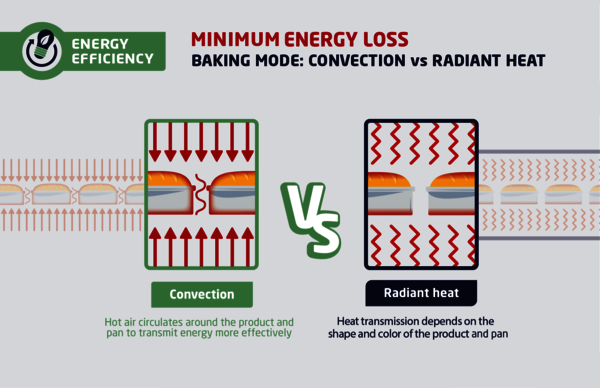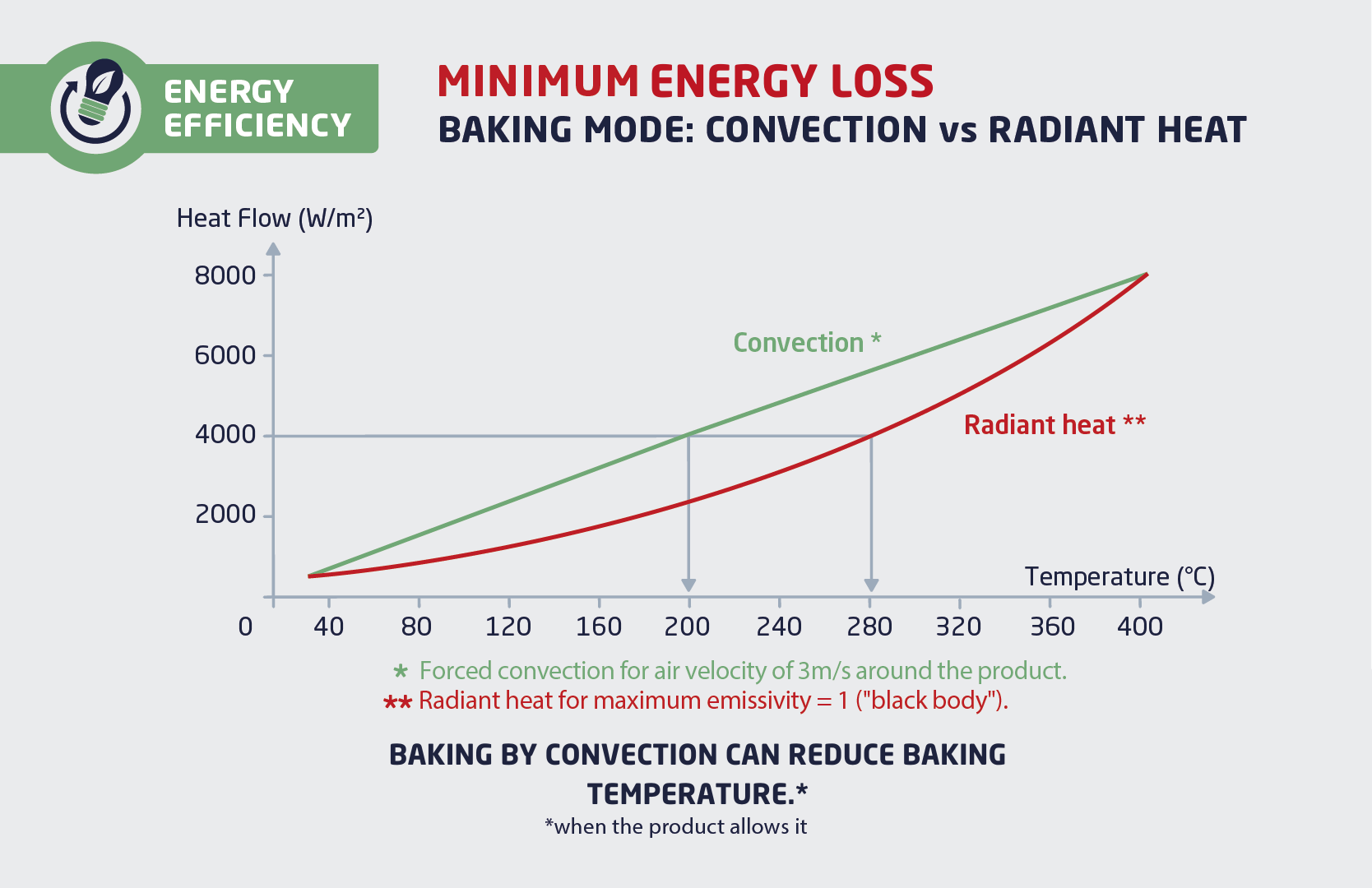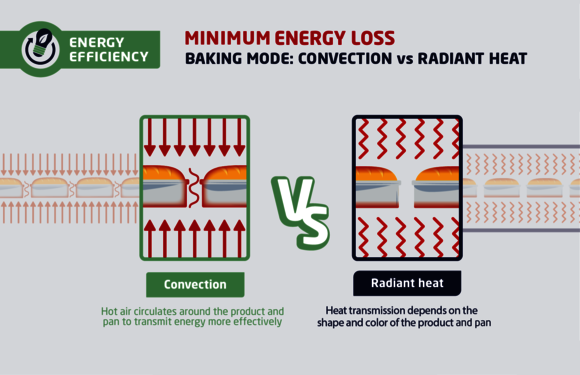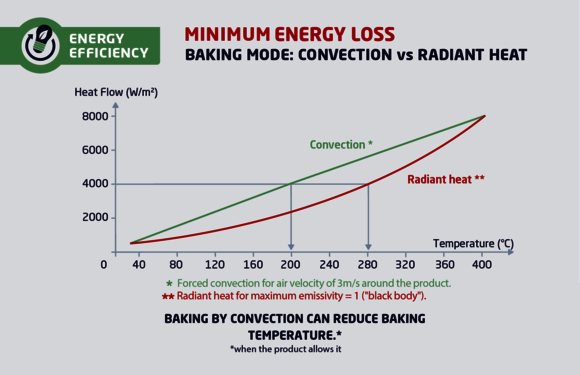Limiting energy loss during baking: convection vs. radiant heat
At a time when energy transition is becoming a major challenge throughout our industry, MECATHERM is committed to pursuing and accelerating its efforts in favor of sustainable development by proposing solutions to reduce energy consumption and carbon footprints.
In our fifth article, MECATHERM expert Hicham Maiden, Thermal Project Manager, compares convection and radiant heat baking methods, explores their effects on industrial-scale oven energy consumption, and gives us his recommendations.
”Our comparison will focus on the efficiency of heat transfer and the temperature levels involved in these two baking methods,” says Hicham.
1.Heat transfer efficiency
By convection, heat is transmitted efficiently by the circulation of hot air around the entire surface of the product and its pan. The result is an evenly backed product.
By radiation, heat is transmitted via electromagnetic waves more or less efficiently, depending on two parameters:
- the exposure of the surfaces of the product and its pan to the waves
- their color, which determines the level of energy absorption - just as the sun absorbs certain colors

When products are close together in the baking chamber, the heat transmitted by radiation to the sides of the products and their supports can be relatively low. This implies a longer baking time by radiation to obtain an optimal result equivalent to convection baking.
2. The temperature level
Convection baking reduces energy consumption by baking at lower temperatures. In the case of radiation, the oven will have to be heating to a higher temperature level to transmit the same energy quantity to the product, resulting in greater energy loss through the fumes and walls. In the example below, if the oven transmits 4000W/m2 to the product, the convection air will have to be heated to 200 degrees, while the radiant heat air will have to be heated to 280 degrees to obtain the same heat flow.

3. Convection baking, the ideal solution for minimal energy loss
When the product allows it, we recommend convection as the main heating mode.
Indeed, for bread baking temperature (from 200 to 300 degrees), convection is ideal from an energy-efficiency point of view, as it lowers the temperature level in the oven while maintaining optimum heat transfer to the product and its pan. Convection also reduces baking time. Our vertical ovens, for example, feature this technology.
However, convection can also be used as a complementary heating mode, offering your products a degree of baking flexibility. Our M-TA oven, for example, features this hybrid technology (radiant heat as the main heating mode and convection as a complementary heating mode).
MECATHERM offers its customers numerous possibilities for optimizing their energy consumption and becoming key players in energy transition.
Interested in this subject? Don't hesitate to read our article on how to limit energy loss through fumes.
And if you'd like to find out more about our sustainable solutions, we'd be delighted to hear from you.


